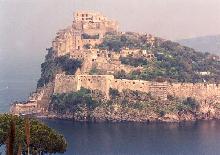|
|
The
Mediterranean Sea
- a brief history Page
3 -
|
Agriculture
At the time
when mammoths still roamed the heavily forested countryside, Europe was sparsely populated
by nomadic tribes who lived mainly on hunting and gathering of available food in the form
of fruits, berries and grains. They began to graze their newly domesticated animals and
discovered the possibility of planting the seeds of the precious grain-bearing plants
around 9000 years ago, probably at first in the Kurdistan area of Turkey. They lived on
the higher shores of the Mediterranean, more suited to their needs, permitting a more
abundant and more efficient production of food, which allowed man to prosper and to grow
in number.
It was
soon found necessary to descend to the more fertile plains, where larger fields were
available for sowing the precious grain, which was ever more vital to feed the larger
populations that were gathering in the permanent settlements, that were soon to grow into
towns and later into cities.
Those who
chose to remain on the higher ground had to continually battle against nature, to eke out
a living, by laboriously constructing over the centuries, those terraced plots on the
steep hill-sides, which are a picturesque feature of the Mediterranean landscape. There
was also a strategic plan in remaining on the more inaccessible slopes: to better escape
the ravaging marauders, which were an all too often occurrence along the Mediterranean
coastlines. This is also the reason for the lovely hill-top towns we see today, girthed by
their massive walls and many defensive towers.
 A hill-top fortress town in Italy A hill-top fortress town in Italy
Northern
Africa and the oriental shores of the Mediterranean, on the other hand, were more barren,
while the much richer plains lay in the Tigris and Euphrates River basin, Mesopotamia
(“between the rivers”) in Persia and also in the Nile delta of Egypt. These are
the areas that had a greater development after the advent of agriculture and represent the
real birth-places of modern Man.
Many
peoples flourished around the Mediterranean in the niches that they found with an abundant
water supply, fertile grounds and preferably with a natural hill-top conformation to give
them a certain degree of security from external attacks. Where the conditions were more
favourable, the settlements developed into civilisations, which grew and extended their
influence and power much further afield, according to the ambitions of the current
leaders, so as to even create empires. Many such civilisations developed along the shores
of the Mediterranean, as we shall see, to last a few life-spans, or as in the case of the
Egyptians, up to 3000 years.
Nevertheless
the influence of these civilisations is ever present, as we today, are what we were.
Because of the various intermingling of the races, through migrations, dominations, rape
and seduction, we all have to a varying degree, chromosomes from each of these successive
peoples and we have been influenced by their thoughts, by their art and by their
religions. To know and to understand them, is to better know and to better understand
ourselves.
<<<
BACK
NEXT >>>
Back to Home Page
The Mediterranean Sea
mediterranean-yachting.com
Copyright L. Camillo 2000
|
 A hill-top fortress town in Italy
A hill-top fortress town in Italy